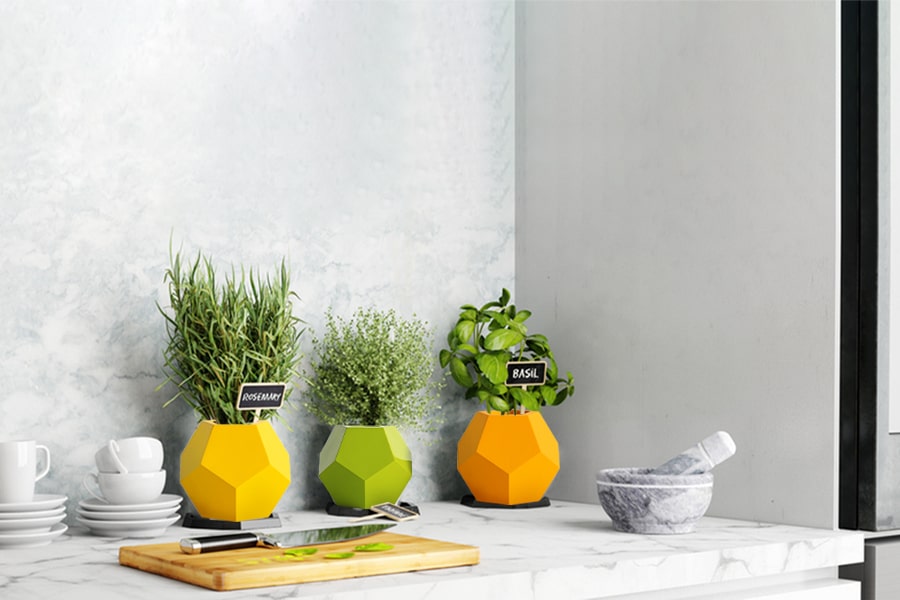Who does not like the scent of fresh herbs growing in a garden? Herbs like mustard, purple lavender, and pink chintz thyme are visually pleasing besides being aromatic.
Undoubtedly, they make up a gardener’s herb heaven. However, having a fresh herb garden is not always feasible in apartment living. Or is it? If you cannot have a lawn full of fresh herbs, switch to growing microgreens and herbs in flower vases.
Yes, you heard that right! Gardening with flowering herbs is possible, even in flower vases, adding aesthetic and aromatic value to your indoor garden. Herbs have smaller root structures, thus leaving enough space for experimental gardening. But how do you start?
Here is an article to help you reimagine herb gardening in compact spaces.
Steps to Grow Herbs in Flower Vases
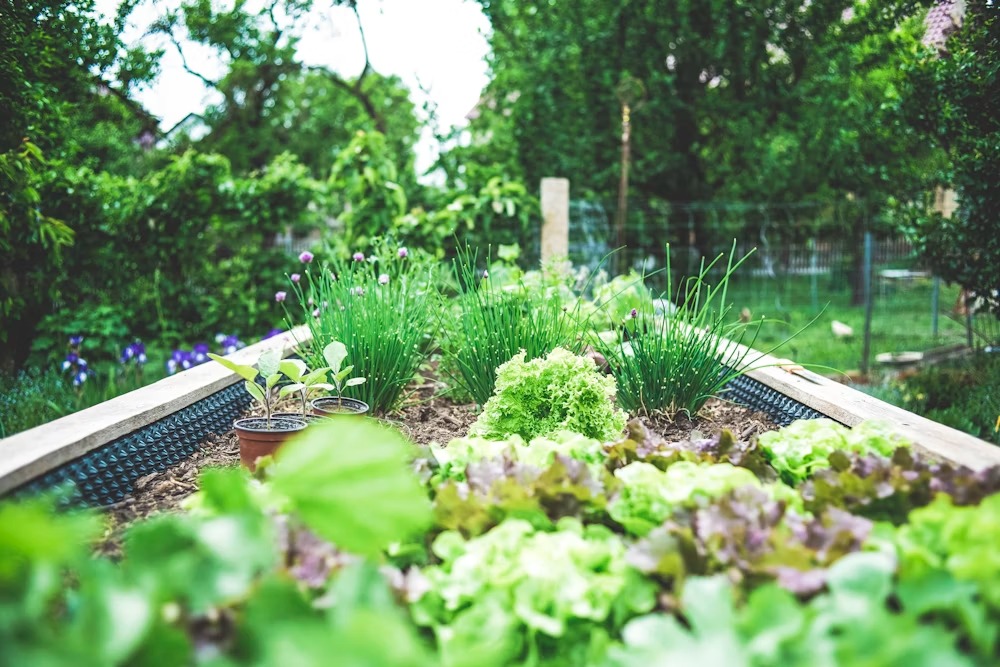
We have taken the first step and selected an ideal flower vase to grow herbs. Now, it is time to get our hands dirty and start gardening. Below are the steps for experimental herb planting in your kitchen.
1. Arranging Rocks and Pebbles
Begin by arranging pebbles, gravel, and small rocks at the base of the flower vase. These are must-haves if your flower vase lacks a drainage hole. Pebbles break the densely packed soil and allow air circulation, ensuring better root health. They also limit soil erosion in pots with wide drainage holes and balance soil nutrition.
2. Preparing the Soil Mix
Now, potting or fertile soil mix will sit above the rock bed inside the flower vase. Unlike solid soil, the potting mix contains organic fertilizers, peat, and compost to maximize nutrition delivery to the herb root system. The organic soil blend is ideal for compact gardening, delivering nutritious and fresh herbs from the comfort of the home.
3. Planting the Herbs (Seeds and Baby Plants)
After adding the soil mix and pebble lining, your flower vase is ready to grow herbs. You can sow seeds of any desirable herb or buy saplings and transplant them in a flower vase. All you have to do is make one-inch holes to insert the seeds and water them lightly. For saplings, remember to be gentle and quick to avoid wilting.
4. Labelling the Flower Vases
Now, it is time to label each jar with the name of each herb variety you choose to grow in your kitchen garden. Put a craft stick with the herb name in the soil or paste stickers on the vase body. Remember, you can be creative and make things fun, quirky, and aesthetically pleasing.
Once the herbs are sown, tagged, and watered, place the flower vase near a window pane or balcony to enable ample sunlight.
Herbs to Grow in Flower Vases
1. Basil
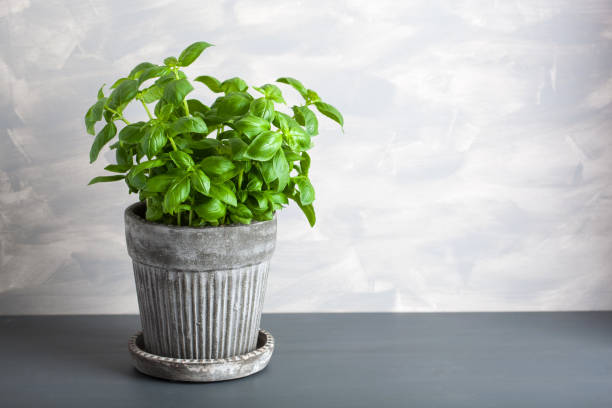
Spicy bush basil has a small root system and is ideal for growing in flower vases. It requires ample sun, fertile soil, and moisture to mature within six weeks.
2. Cilantro
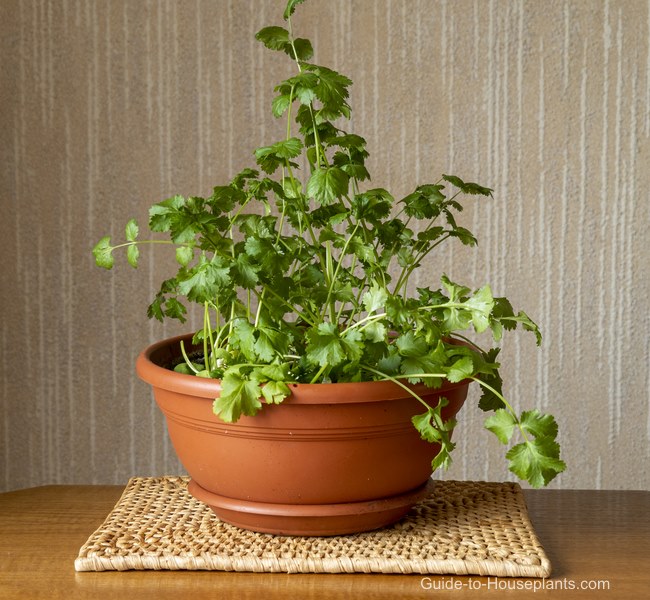
Cilantro needs comparatively more soil to extend its roots. Pick a comparatively large flower vase to grow cilantro and keep it in direct sunlight. This herb variety can grow up to two inches and flavor any dish with tangy leaves.
3. Peppermint
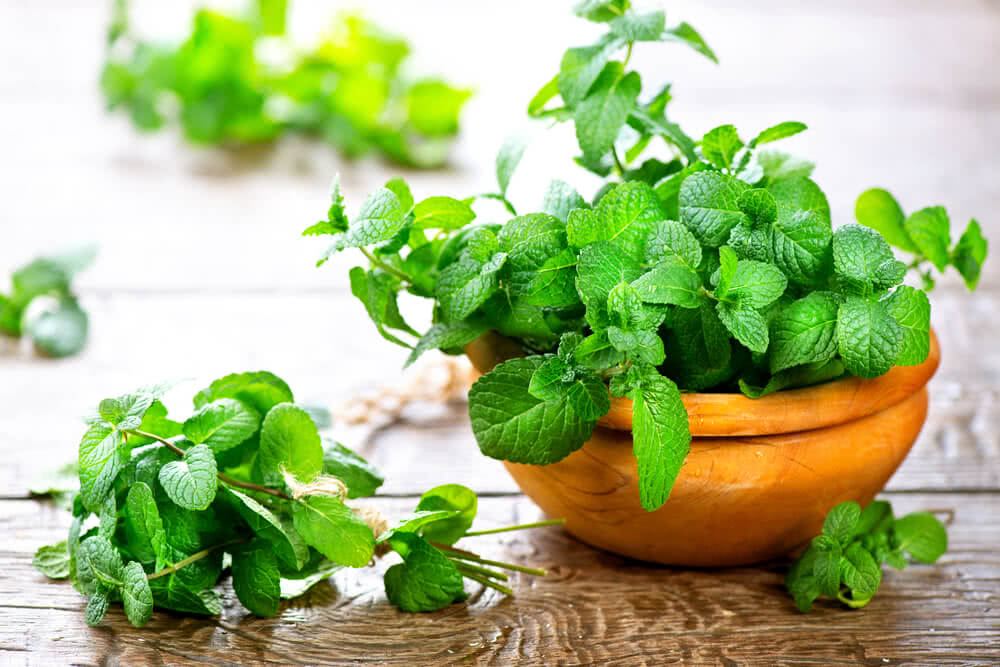
Peppermint is also an ideal herb for compact flower vase gardening. It can grow in partial sunlight and shade with enough moisture and nutrient soil. Mint is an invasive perennial plant; therefore, you will always have extra freshness in salads, fruit juices, and pickles.
4. Rosemary
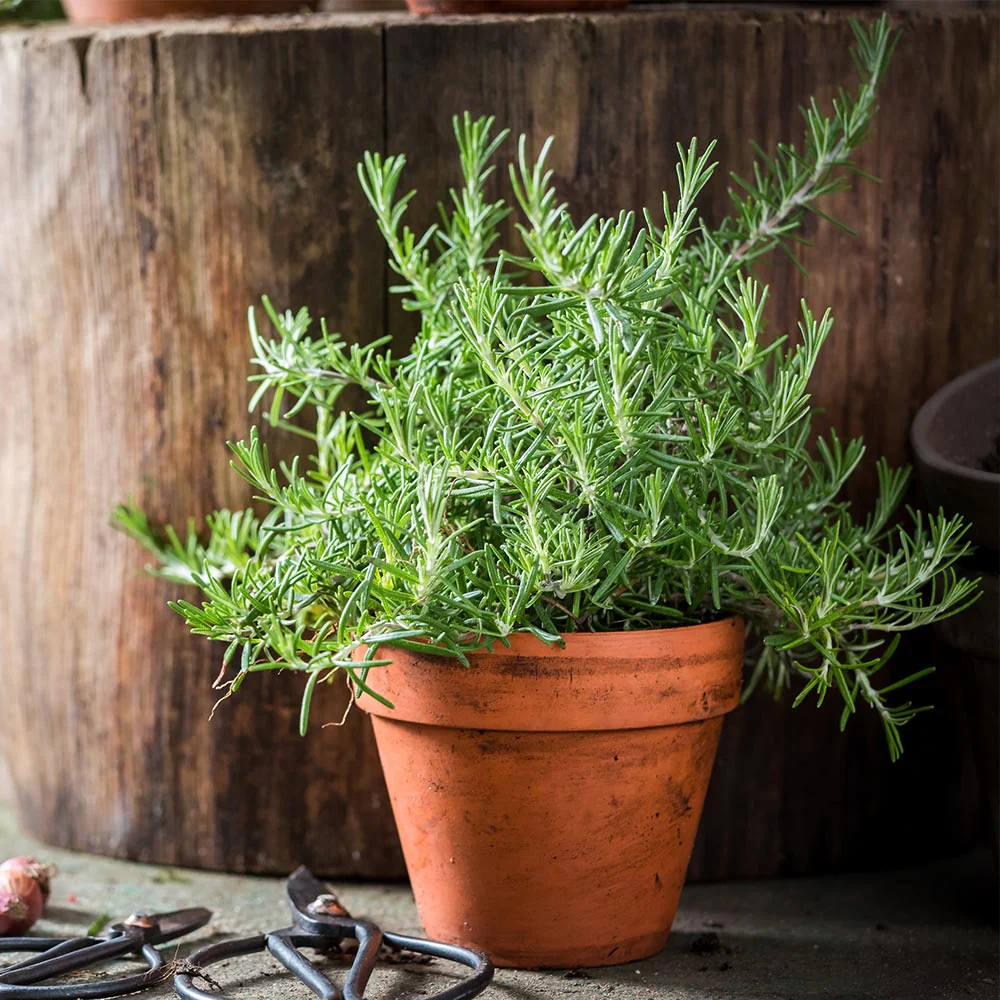
Growing rosemary is low-maintenance. The herb can tolerate drought and needs minimal water to grow indoors. Never overwater rosemary, and you will enjoy full, fresh herbal bloom in your kitchen garden.
5. Oregano
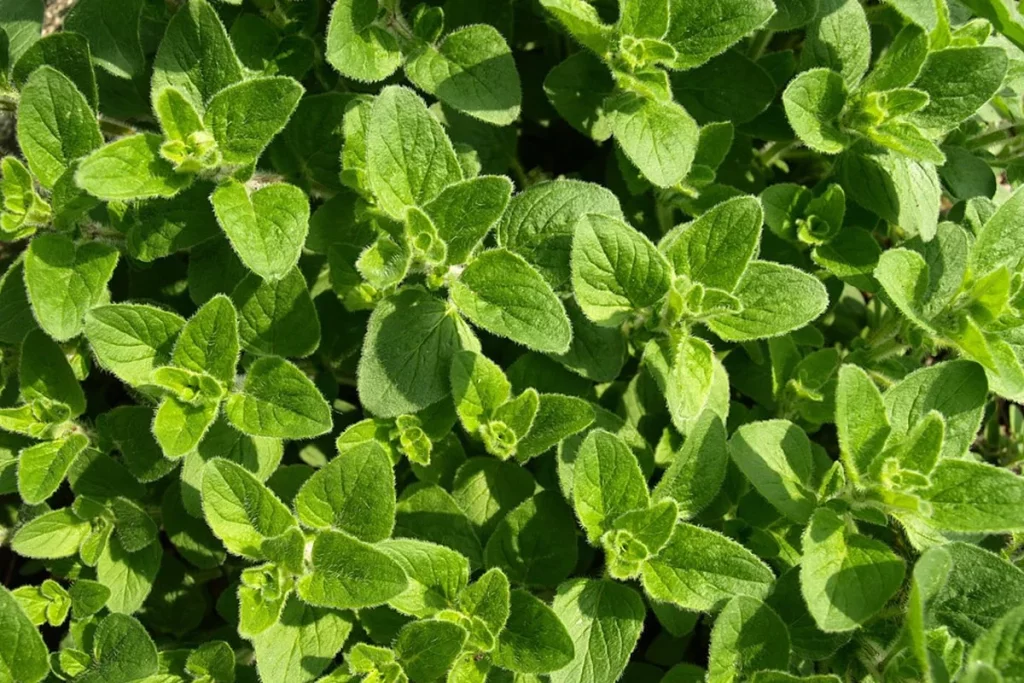
Moist soil with good drainage and maximum sun is all oregano needs to thrive. Remember to never compromise on the sun while growing oregano. You can use the herb fresh or dried to flavor your food.
Wrapping It Up
It is undoubtedly possible to grow herbs in flower vases. With responsible gardening and a touch of passion, creativity, and mindfulness, one can have an ever-blooming indoor herb garden.
Start by selecting the right vase for the right herbs, preparing a soil mix, allowing water and sunlight, and timely harvesting, which are crucial for the desired gardening results. Follow the steps above, and you will never run out of herbs. Which herbs are you planning to grow this season?
Comment below and share your gardening tips and tricks with us.

